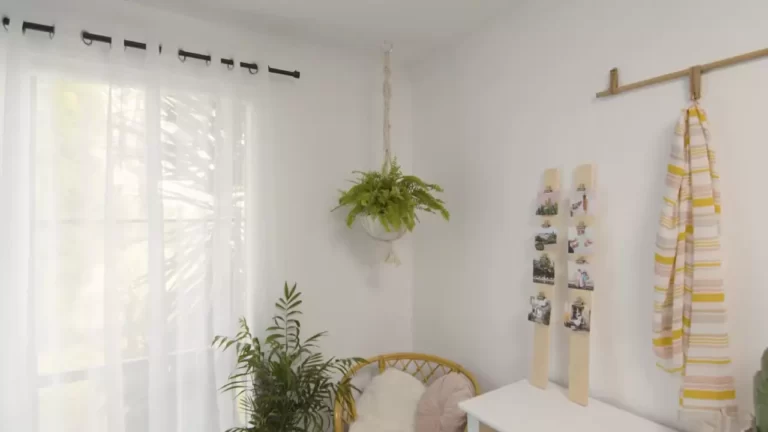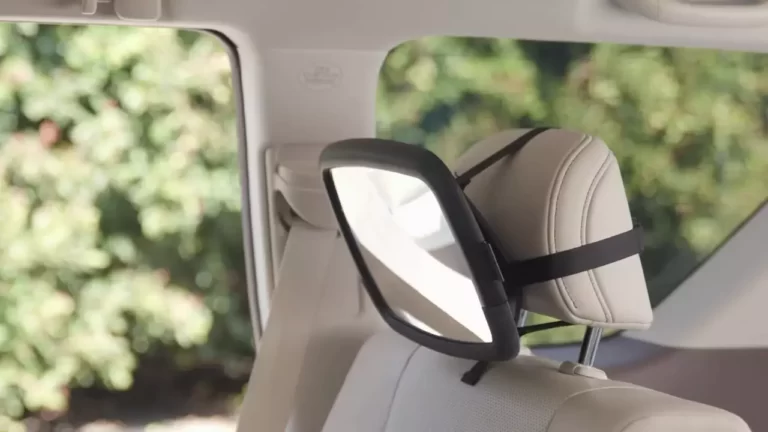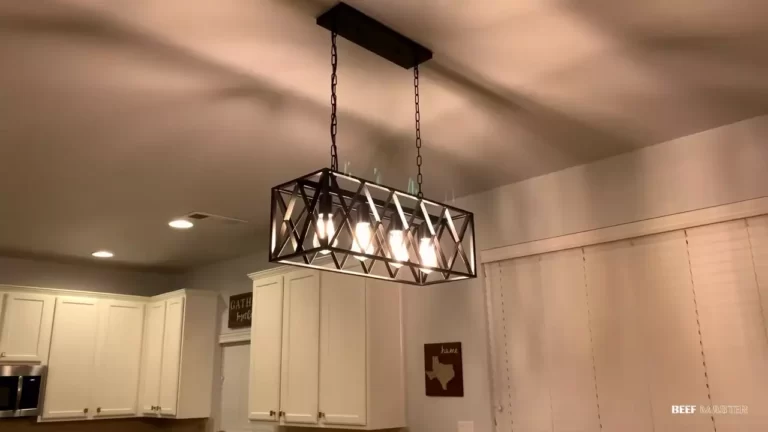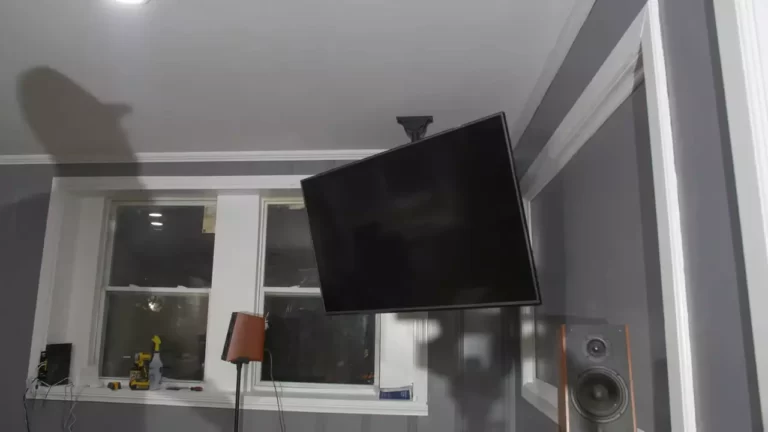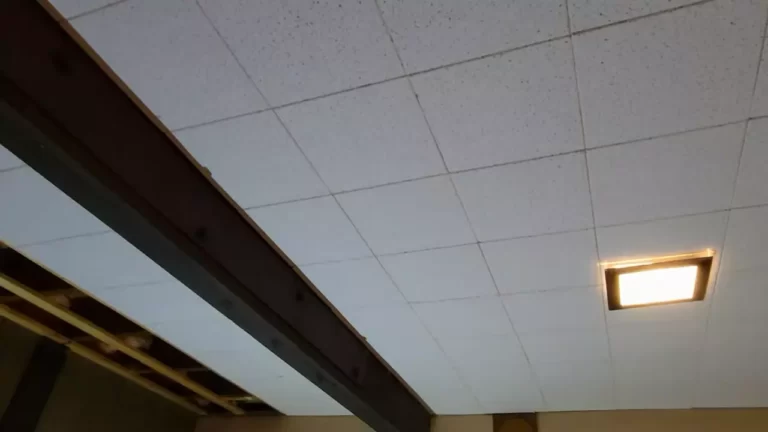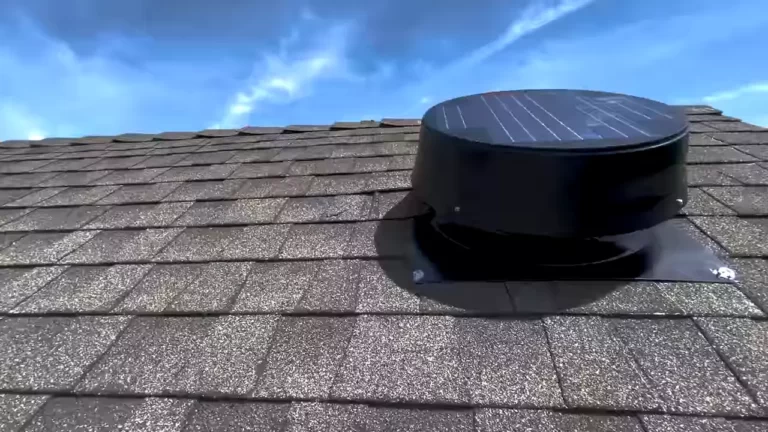How to Install Corner Bead?
To install corner bead, simply measure, cut, and attach the bead to the corners using a combination of adhesive and screws. Corner bead is an essential component used in drywall installation to strengthen and protect the corners.
It provides a straight edge for a smooth and professional finish. Installing corner bead is a relatively straightforward process that requires a few basic tools and materials. This guide will walk you through the steps involved in properly installing corner bead on your drywall corners.
By following these instructions, you can achieve a clean and durable corner finish that will enhance the overall appearance of your walls. So, let’s get started and learn how to install corner bead properly.
Understanding Corner Bead
When it comes to drywall installation, one crucial element that often goes unnoticed is the corner bead. Corner bead is a piece of material that is specifically designed to reinforce and protect the corners of drywall walls and ceilings. It adds strength and durability to these vulnerable areas, ensuring a professional and seamless finish.

What is Corner Bead?
In simple terms, corner bead is a metal or plastic strip that is attached to the corners of drywall. It serves as a guide for applying joint compound and creates a straight edge for a smooth and polished appearance. Corner bead not only protects the corners from damage but also helps to achieve a professional-looking finish.
Types of Corner Bead
There are several types of corner bead available, each catering to different needs and purposes. Here are some common types:
- Metal Corner Bead: Made of galvanized steel or aluminum, metal corner bead provides exceptional strength and protection. It is ideal for high-traffic areas and areas prone to impact or rough treatment.
- PVC Corner Bead: PVC corner bead is an excellent choice for areas with high humidity, such as bathrooms and kitchens. It resists moisture and does not corrode or rust like metal corner bead.
- Paper-Faced Corner Bead: This type of corner bead features a paper outer layer, making it easy to tape and feather the joint compound. It is commonly used for inside corners.
Benefits of Using Corner Bead
Using corner bead offers several benefits that make it an essential component for any drywall installation project. Here are the key advantages:
- Strength and Protection: Corner bead adds strength and durability to corners, protecting them from impact and wear.
- Smooth Finish: By providing a straight edge, corner bead helps achieve a seamless and professional-looking finish.
- Easier Application: Corner bead serves as a guide for applying joint compound, making the taping and mudding process easier and more efficient.
- Prevents Cracking: The reinforcement provided by corner bead helps prevent cracks and dents from forming along the corners of the drywall.
- Wide Range of Options: With various types of corner bead available, you can choose the one that best suits your specific needs and preferences.
Overall, understanding corner bead and utilizing it in your drywall installation projects can greatly enhance the durability, appearance, and longevity of your walls and ceilings. Whether you opt for metal, PVC, or paper-faced corner bead, its benefits are undeniable, making it a must-have for professional results.
Tools And Materials Required
In order to install corner bead properly, you will need a set of essential tools and materials. These are crucial to ensure a successful installation and a professional-looking finish. Let’s take a closer look at the tools and materials you will need:
Essential Tools for Corner Bead Installation
When it comes to installing corner bead, having the right tools is key. Here are the essential tools you will need:
- Tape Measure: A tape measure will help you accurately measure the corners and determine the length of the corner bead needed.
- Utility Knife: A sharp utility knife is necessary for cutting the corner bead to the desired length.
- Corner Trowel: A corner trowel is used to apply joint compound to the corner bead.
- Hawk: A hawk is a flat, rectangular tool with a handle that holds the joint compound. It allows for easy access and spreading of the compound.
- Mud Pan: A mud pan is a shallow, metallic or plastic tray used to hold the joint compound while working.
- Sanding Block: After the joint compound has dried, a sanding block is needed to smooth out any imperfections and create a seamless finish.
- Hammer or Nail Gun: Depending on the type of corner bead you are using, you will need either a hammer or a nail gun to secure the bead to the wall or ceiling.
- Level: A level is used to ensure that the corner bead is installed straight and plumb.
- Safety Equipment: Don’t forget to wear safety glasses and gloves to protect yourself during the installation process.

Materials Needed for Installing Corner Bead
In addition to the tools mentioned above, you will also need the following materials:
- Corner Bead: This is the metal or vinyl strip that provides a straight edge and protects the corners of the wall or ceiling.
- Joint Compound: Joint compound is a paste-like material used to cover the corner bead and create a smooth surface.
- Screws or Nails: Depending on the type of corner bead, you will need screws or nails to secure it in place.
- Sanding Paper: Sanding paper is used to sand down any rough edges and ensure a smooth finish on the joint compound.
- Primer and Paint: Lastly, primer and paint will be needed to finish the installation and blend the corner bead with the surrounding wall or ceiling.
By having these essential tools and materials on hand, you will be well-prepared to tackle the corner bead installation project and achieve professional results.
Preparation And Planning
Before installing corner bead, it’s important to properly prepare and plan for the task to ensure a successful outcome. By evaluating the corners, measuring and cutting the corner bead, and preparing the wall surface, you can ensure a precise and smooth installation. In this section, we will delve into each step and provide you with the necessary guidance to get started.
Evaluating the Corners
The first step in preparing to install corner bead is evaluating the corners of your wall. Take a close look at each corner to identify any imperfections or irregularities that may affect the installation. Look for bulges, bumps, or any other issues that need to be addressed before proceeding. Additionally, inspect the existing corner bead to determine if it needs to be replaced or repaired.
Once you have evaluated the corners, make a note of any necessary repairs or replacements that need to be made. This will allow you to plan and gather the required materials in advance, ensuring a smooth and efficient installation process.
Measuring and Cutting the Corner Bead
Accurate measurements are crucial when it comes to installing corner bead. Using a tape measure, carefully measure the length of each corner that requires bead installation. Consider adding a small amount of extra length to account for any variations or discrepancies.
With the measurements in hand, it’s time to cut the corner bead. This can be done using tin snips or a hacksaw, depending on the material of the bead. Take your time and ensure that the cuts are precise and accurate, as this will ensure a professional-looking finish.
Preparing the Wall Surface
Before attaching the corner bead, it’s essential to prepare the wall surface to ensure proper adhesion and a seamless installation. Start by cleaning the wall thoroughly to remove any dirt, dust, or debris that may interfere with the installation process. Pay close attention to the corners, as they tend to accumulate more dirt and grime.
Once the wall is clean, inspect it for any loose or damaged drywall. Repair any imperfections using a joint compound or spackling paste, and sand it smooth once dry. This will create a level and even surface for the corner bead to adhere to.
In addition to preparing the wall surface, it’s also a good idea to apply a coat of primer before installing the corner bead. The primer will help the bead adhere better to the wall and create a stronger bond. Allow the primer to dry completely before moving forward with the installation process.
By evaluating the corners, measuring and cutting the corner bead accurately, and properly preparing the wall surface, you are setting yourself up for a successful corner bead installation. The preparation and planning stage is crucial for achieving a professional and polished look, so be sure to invest the time and effort necessary to get it right.
Installing Metal Corner Bead
Welcome to our step-by-step guide on how to install metal corner bead. Metal corner bead is a durable and versatile option for finishing the corners of drywall and creating clean edges. In this blog post, we will walk you through the process of securing the metal corner bead with screws, applying joint compound, and sanding and finishing the corner bead. By following these instructions, you’ll be able to achieve professional-looking results for your home improvement projects.

Securing Metal Corner Bead with Screws
Before you begin securing the metal corner bead with screws, ensure that the corner is clean and free from any dust or debris. This will help the corner bead adhere properly to the drywall.
To secure the metal corner bead, follow these steps:
- Measure the length of the corner bead and cut it to the appropriate size using tin snips.
- Apply construction adhesive along the back of the corner bead.
- Position the corner bead over the corner of the drywall and press it firmly in place.
- Use a screw gun to drive drywall screws through the pre-drilled holes in the corner bead and into the drywall. Space the screws approximately 6 inches apart along the length of the corner bead.
Applying Joint Compound to Metal Corner Bead
Once the metal corner bead is securely in place, it’s time to apply joint compound to ensure a smooth and seamless finish. Joint compound is a thick paste-like substance that is used to fill in and conceal the screws and gaps between the corner bead and the drywall.
To apply joint compound to the metal corner bead, follow these steps:
- Using a putty knife, scoop a small amount of joint compound onto the edge of the knife.
- Hold the putty knife at a 45-degree angle and apply a thin layer of joint compound to the surface of the corner bead, covering the screws and filling in any gaps or imperfections.
- Smooth out the joint compound by lightly dragging the putty knife across the surface, applying even pressure. Repeat this process until the entire corner bead is covered and the joint compound is smooth and level.
Sanding and Finishing Metal Corner Bead
After the joint compound has dried completely, it’s time to sand and finish the metal corner bead for a flawless look. Sanding will help to remove any excess joint compound, smooth out any rough edges, and ensure a seamless transition between the corner bead and the surrounding drywall.
Here are the steps to sand and finish the metal corner bead:
- Using fine-grit sandpaper or a sanding block, gently sand the surface of the corner bead, focusing on any areas with excess joint compound or rough edges. Be careful not to sand too aggressively, as this can damage the corner bead.
- Wipe away any dust or debris with a damp cloth or sponge.
- Apply a final layer of joint compound to the corner bead, using the same techniques as before. This will further smooth out any imperfections and provide a seamless finish.
- Allow the joint compound to dry completely before proceeding to the next step.
- Once the joint compound is dry, sand the corner bead again, this time using a finer grit sandpaper to achieve a smooth and polished finish.
Congratulations! You have successfully installed and finished your metal corner bead. Now you can proceed with painting or applying wallpaper to complete your interior design vision. If you encounter any issues or have further questions, feel free to consult a professional for assistance. Happy DIY-ing!
Installing Vinyl Corner Bead
Installing vinyl corner bead is an important step in ensuring a professional and finished look for your corners. The vinyl material is durable, easy to install, and provides a clean transition between two walls. In this section, we will explore two methods for attaching vinyl corner bead: using adhesive and securing it with nails. We will also discuss how to apply joint compound to the bead for a seamless finish.
Attaching Vinyl Corner Bead with Adhesive
One effective way to attach vinyl corner bead is by using adhesive. This method provides a strong and long-lasting bond between the bead and the wall. Here are the steps to follow:
- Clean the surface: Before applying adhesive, make sure the corner where you will be installing the bead is clean and free from any dust or debris. Use a damp cloth or sponge to wipe away any dirt.
- Apply adhesive: Use a caulk gun to apply a generous amount of construction adhesive along the length of the corner bead. Make sure to apply the adhesive evenly and cover the entire surface.
- Position the bead: Carefully align the bead with the corner and press it firmly against the wall. Make sure it is straight and level. The adhesive will hold the bead in place while it sets.
- Secure the bead: To ensure a strong bond, use masking tape to hold the bead in place until the adhesive dries. Leave the tape on for the recommended drying time specified on the adhesive packaging.

Securing Vinyl Corner Bead with Nails
Another option for attaching vinyl corner bead is to secure it with nails. Nailing the bead provides extra reinforcement and stability. Here is how you can do it:
- Position the bead: Start by positioning the vinyl corner bead along the corner, making sure it is straight and level. Use a level to double-check its alignment.
- Drive the nails: Using a hammer or a nail gun, drive nails through the pre-drilled holes in the corner bead. Place the nails approximately 6 to 8 inches apart to ensure secure attachment.
- Countersink the nails: After driving the nails, use a nail punch tool to gently tap the nail heads below the surface of the bead. This will allow for a smooth and seamless finish.
Applying Joint Compound to Vinyl Corner Bead
After attaching the vinyl corner bead, the next step is to apply joint compound. This will help to conceal the nails or adhesive and create a seamless transition between the bead and the wall. Follow these steps:
- Prepare the joint compound: Scoop out a small amount of joint compound onto a hawk or a trowel. Make sure it is the right consistency for easy application.
- Apply the compound: Hold the hawk or trowel at a slight angle and apply the joint compound to the corner bead. Use a smooth and even motion to spread the compound along the length of the bead.
- Feather the edges: To create a seamless finish, feather the edges of the joint compound by gradually thinning it out. This will help to blend the compound into the surrounding wall surface.
- Sand and repeat: Once the joint compound is dry, sand the surface lightly to remove any imperfections. Apply another layer of joint compound if necessary, sand, and repeat until the desired smoothness is achieved.
By following these steps, you can confidently install vinyl corner bead using either adhesive or nails and achieve a professional and seamless finish.
Troubleshooting Common Issues
Installing corner bead is an essential step in achieving a professional finish for your drywall corners. However, like any construction task, it can come with its own set of challenges. In this section, we will address some common issues that you may encounter while installing corner bead and provide you with practical troubleshooting tips to help you overcome them.
Dealing with Corner Bead Misalignment
One of the most common issues during corner bead installation is misalignment. It can happen due to various reasons such as incorrect measurement, improper adhesive application, or accidental movement of the corner bead during installation. When your corner bead is misaligned, it not only affects the aesthetic appeal but can also compromise the durability of the finished product. Here are a few steps you can take to tackle this issue:
- Start by carefully measuring the length of the corner bead and mark it on the wall or ceiling using a pencil or tape.
- Ensure that the adhesive is applied evenly and generously on both the wall and the corner bead to provide a strong bond.
- Use a level to check the alignment of the corner bead. If it is misaligned, gently adjust it by applying pressure with your hands or using a rubber mallet.
- Secure the corner bead in place using nails or screws, making sure to drive them through the pre-drilled holes.
- Double-check the alignment before allowing the adhesive to fully dry. If necessary, make minor adjustments and hold the corner bead in place with tape until it sets.
Repairing Damaged Corner Bead
No matter how careful you are during installation, there is always a possibility of damaging the corner bead. Whether it’s a dent, a crack, or a complete detachment, it’s essential to address the issue promptly to prevent further damage. Here’s how you can repair damaged corner bead:
- Assess the extent of the damage. If it’s a minor dent or crack, you can often repair it without replacing the entire corner bead.
- Using a putty knife, gently apply joint compound or spackle over the damaged area, feathering it out to blend with the surrounding surface.
- Allow the compound to dry completely and sand it lightly to achieve a smooth finish.
- If the damage is severe or the corner bead is completely detached, you may need to remove and replace it. Follow the installation steps mentioned earlier to install a new corner bead.
Preventing Cracks and Bubbles
Cracks and bubbles can be frustrating issues that can compromise the appearance and longevity of your corner bead installation. To prevent these common problems, here are a few tips:
- Ensure that the corners of your drywall are properly reinforced with joint compound or fiber tape before installing the corner bead.
- Apply the adhesive evenly and smoothly on both the wall and corner bead to avoid creating air pockets or gaps that can lead to cracks.
- Keep the corner bead clean and free from dust or debris, as particles can interfere with the adhesive bond and result in bubbles or weak spots.
- Allow sufficient drying time for the adhesive and joint compound before continuing with the next steps of your drywall finishing process.
By addressing these common issues during corner bead installation, you can achieve a flawless finish and ensure the long-lasting performance of your drywall corners. Taking the time to troubleshoot and resolve any problems that arise will result in a professionally installed corner bead that enhances the overall quality of your project.

Tips And Best Practices
When it comes to installing corner bead, following a few tips and best practices can help ensure a smooth and professional-looking finish. In this section, we will discuss how to work with inside and outside corners, properly finish and paint the corner bead, and maintain it for long-lasting durability.
Working with Inside and Outside Corners
Installing corner bead on both inside and outside corners requires careful attention to detail. Here are a few key tips to keep in mind:
- Measure the length of the corner accurately before cutting the corner bead to size.
- Use a miter saw or aviation snips to cut the corner bead at a 45-degree angle for clean and precise corners.
- Apply adhesive to the corner before attaching the bead with nails or screws for added stability.
- Ensure the corner bead is straight and level by using a level or a laser level during installation.
Properly Finishing and Painting Corner Bead
Once the corner bead is installed, proper finishing and painting techniques can elevate the appearance of the finished wall. Consider the following best practices:
- Apply a thin layer of joint compound over the corner bead, making sure to feather the edges for a seamless transition between the bead and the wall. Allow the compound to dry completely before proceeding.
- Sand the dried joint compound lightly with fine-grit sandpaper to create a smooth surface. Remove any dust or debris before proceeding to the next step.
- Prime the corner bead with a high-quality primer to ensure proper paint adhesion and durability.
- Choose a paint color that matches the surrounding wall and apply it evenly to the corner bead with a paintbrush or roller. Allow the paint to dry fully between coats.
Maintaining Corner Bead for Longevity
To maximize the lifespan of your corner bead, it’s important to take care of it properly. Here are a few maintenance tips:
- Regularly inspect the corner bead for any signs of damage or wear, such as dents or cracks. Repair any issues promptly to prevent further damage.
- Avoid applying excessive pressure or force to the corner bead, as it may cause it to bend or become misaligned.
- Keep the corner bead clean by wiping it down with a damp cloth as needed.
- Consider adding a topcoat or sealant to the corner bead to provide an extra layer of protection against moisture and humidity.
By following these tips and best practices, you can ensure a successful installation of corner bead and achieve a professional-looking finish that lasts for years to come.
Frequently Asked Questions On How To Install Corner Bead
What Is The Best Way To Attach Corner Bead?
The best way to attach corner bead is by using a good quality adhesive or drywall compound. Apply the adhesive or compound along the edges of the corner bead, then press it firmly into place. Make sure to align it properly and allow it to dry before continuing with your project.
Do You Nail Or Screw Corner Bead?
Nail corner bead for a secure installation. Screws can also be used, but nails are commonly preferred.
Do You Set Corner Bead In Mud?
Yes, corner bead is set in mud during the drywall installation process.
Can You Screw Corner Bead To Drywall?
Yes, you can screw corner bead to drywall. It’s a common method for securing the bead in place.
Conclusion
To wrap up, installing corner bead is a simple and effective way to protect the edges of your walls and give them a professional finish. With the help of this guide, you can confidently tackle this DIY project. Remember to ensure proper measurement, cutting, and securing techniques for a seamless result.
By following these steps, you’ll be able to achieve a polished look in no time. Happy remodeling!


